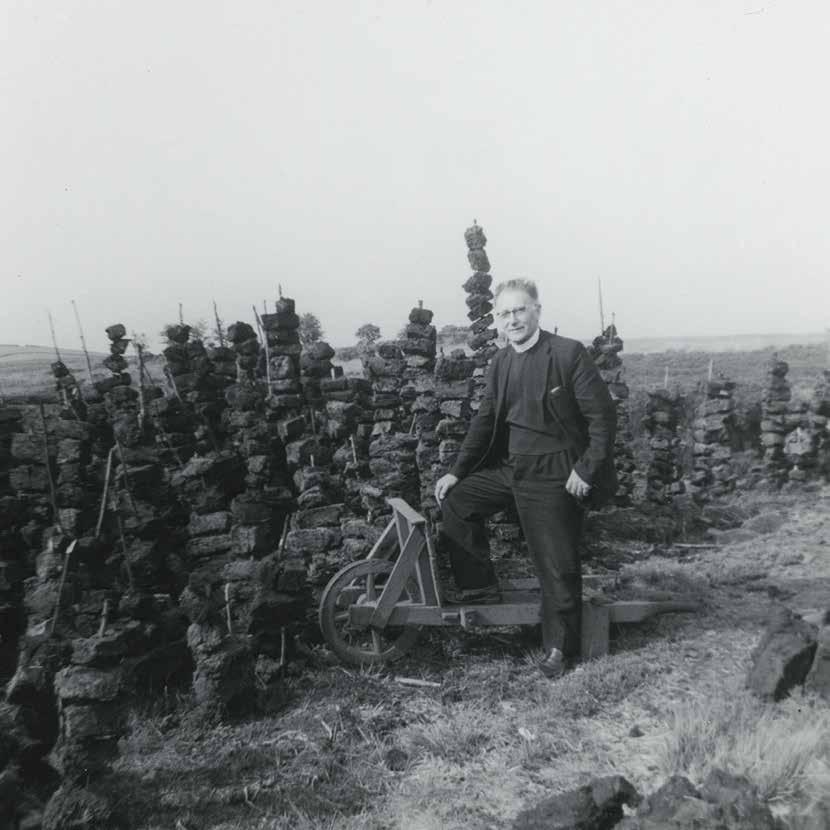
2 minute read
Farming in Ballyholland during the 1930s and 1940s
Eddie McAteer was interviewed by Noreen Cunningham for his memories of farming life in October 2004.
In the 1930s and 1940s there were a number of small farms in Ballyholland townland, outside Newry, ranging from six to nine acres in size. My father, who had come home from America around 1926, bought a small farm adjacent to our own, called ‘Quinns’. It was about four acres in size, and he bought it for £50. It wasn’t great land, as it was very rocky, but most of the land round Ballyholland was like that, and it was once known as the ‘Stoney Quarter’.

At that time ploughing was carried out with horses and crops were grown in rotation, for example you would grow potatoes, the next year oats, and then maybe a crop of hay.
I sowed oat and grass seed by hand using a meal bag. I would cut it, and tie it up round my neck, then fill it with nearly half a hundred weight of oat seed. I preferred to sow by hand, rather than use a seed fiddle, as I could do it more evenly and I could sow about a three yards width walking down the field.
During the war years the government introduced ‘compulsory tillage’, which meant the farmers had to plant most of their land with crops such as oats and potatoes.
Most small farms kept a few pigs, and the type of pig kept was commonly known as the ‘York’ or Large White Pig; it was easy to fatten and was resistant to disease. They were fed boiled potatoes and yellow meal or Indian corn, and if you had a cow, some buttermilk.
Most farms of nine or ten acres, would have kept a couple of cattle, which were usually a breed known as Shorthorn, as continental breeds were not in vogue at this stage. A cow and a calf, and maybe the previous year’s calf were usually kept. If the latter was a male, a bullock, it would have been fattened up and sold at about two years of age at the local fair, or to another farmer.
Women would have played a large part in farming, because the small acreage wouldn’t have been enough to keep a family. The husband would have had another job, and most of the menfolk around Ballyholland were employed in the quarries. So while the men were at work, the women were at home feeding the pigs and keeping hens to produce eggs for sale.
I remember my mother planting potatoes. The drills would have been prepared by a local ploughman, and my mother would drop the potatoes onto the drills. When my father came home from work, my mother had drills of potatoes ready for him to cover with the spade, and that’s the way the majority of the local people farmed.
All the farmers would have kept a garden, and I remember my father planting beetroot, carrots, radishes, celery and parsley. We were nearly selfsufficient and only a few items such as flour, tea, salt, sugar and bacon were purchased in the shops.









